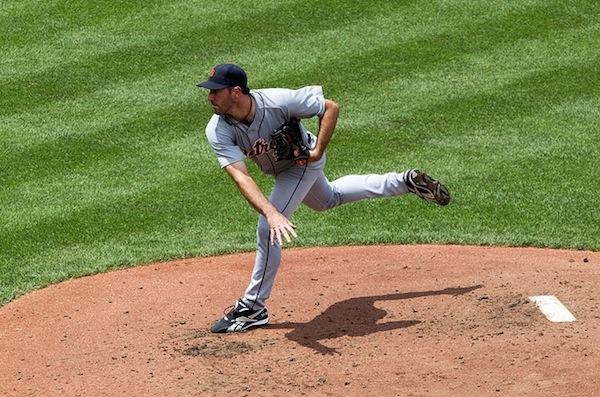
Right in the middle of March Madness, news quietly broke regarding two of Major League Baseball’s (MLB) marquee players: Tigers’ ace Justin Verlander and Giants’ catcher Buster Posey each signed record-setting long-term deals with their respective teams.
Posey signed a nine-year, $167 million deal, the longest contract in Giants history, while Verlander’s new contract, which makes him baseball’s most expensive pitcher, is good for seven years and $180 million.
These deals are evidence of a trend that’s becoming more and more common in the MLB. Baseball clubs are increasingly going the way of the National Hockey League (NHL) and signing star players to lucrative long-term contracts that secure star players through (and often past) their primes. The question for general managers has become whether the benefit of locking up these superstars now will be worth the salary the players will command years down the road.
Despite their increasing popularity, I generally oppose these extreme long-term contracts. The future is unpredictable, and agreeing to pay tens of millions of dollars to athletes eight to 10 years down the road based on current production seems crazy (I’m looking at you, A-Rod). Even so, not all of these contracts are created equal, with some being even crazier than others.
The Posey signing seems reasonable, if only for one simple factor: age. Posey is only 26 years old, so his new contract with the Giants lasts only until he turns 35. While a drop in production in his mid-30s is certainly likely, especially since Posey plays catcher, a position that has already threatened his durability (Posey missed the majority of the 2011 season after a collision at home plate resulted in a broken ankle), the contract ensures that the Giants will benefit from all of Posey’s production in the prime of his career without forcing them to pay a massive salary as Posey ages into the twilight of his career.
Verlander’s contract is riskier, given that Detroit’s horse is already 30 years old. His contract will run through age 37. However, I still believe the Verlander signing will turn out well for the Tigers despite the fact that his production may decline as he gets older. Verlander, arguably the most dominant pitcher in baseball over the last few years, has proven himself quite durable, and the Tigers have shown that they have the talent to win a World Series with their current personnel. Though the length of the deal may mean a couple lesser years from Verlander on the back-end of his contract, it seems a small price to pay for the services of the dominant ace in the near future, and a legitimate shot at a World Series title.
Posey and Verlander’s new contracts resemble a similar free-agent signing from the previous year, Albert Pujols’ 10-year, $240 million agreement with the Angels, which to me seems like borderline insanity. Sure, Pujols is a great hitter. However, he was also 32 years old in the first year of the contract, and will be 42 by the time it expires. It’s likely that Pujols’ best years are already behind him, and while he will certainly remain productive for several more years, it is unlikely that he will be able to perform up to the level of his contract for the full 10 years. In fact, I think the Angels will be lucky to get five “elite” years out of Pujols at this point, and will be kicking themselves eight, nine and 10 years down the road when they are still paying him millions.
Based on the precedents set by these and other recent “mega deals,” it appears that increasingly fat, guaranteed salaries are becoming the norm for superstar free agents. I’m not saying teams should avoid them entirely, because despite the risks, the value of securing a homegrown prospect like Posey can validate some increased spending. Rather, teams should do themselves a favor and save the huge contracts for younger players like Mike Trout, Bryce Harper and Posey who should be able to produce for years to come. Just ask the Yankees about Alex Rodriguez’s contract and see whether they recommend 10 year agreements with 30-something year old sluggers. Spoiler alert: they probably don’t. <<<



